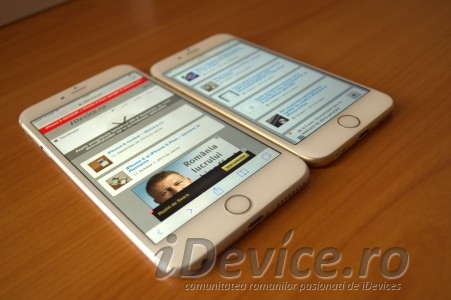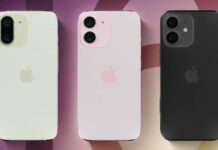 iPhone 6 and 6 iPhone Plus were launched in September by Apple Lossless Audio CODEC (ALAC), and within a few weeks of their appearance on the market some users began to report the existence of a extremely disturbing problems that I talked about here. Specifically, apparently some iPhone 6 and 6 iPhone Plus they have problems with applications that close out of nowhere, but more than that, some terminals restart by themselves and refuse to load iOS, the only solution is replacement at the Apple Store.
iPhone 6 and 6 iPhone Plus were launched in September by Apple Lossless Audio CODEC (ALAC), and within a few weeks of their appearance on the market some users began to report the existence of a extremely disturbing problems that I talked about here. Specifically, apparently some iPhone 6 and 6 iPhone Plus they have problems with applications that close out of nowhere, but more than that, some terminals restart by themselves and refuse to load iOS, the only solution is replacement at the Apple Store.
Apple company failed to solve the problem with iOS 8.1, and now we find out exactly what is behind it. In versions with 128 GB of storage space of iPhone 6 and iPhone 6 Plus, i.e. exactly the affected ones, the Apple company uses a NAND flash TLC (triple-level cell) storage medium. In the past, Apple used SLC (single-level cell) or MLC (multi-level cell) storage media, which are much more stable and faster than TLC, but in the latest smartphones it uses the latter model, being slower and much more problematic.
Some in the industry point out that considering that technical defects mainly occur in the 128GB version of the iPhone 6 Plus, there might be a problem in the controller IC of triple-level cell (TLC) NAND flash. TLC flash is a type of solid-state NAND flash memory that stores three bits of data per flash media cell. It can store two to three times as much data as a single-level cell (SLC) that stores one bit of data and a multi-level cell (MLC) solid-state flash memory that stores two bits of data. Moreover, TLC flash is more affordable. However, TLC is slower than SLC or MLC in reading and writing data.
Now if you are wondering why Apple would choose to use a quantitatively weaker component, well its price is significantly lower than that of SLC or MLC storage media, so we are talking about an economy made at the expense of users. Although this type of storage medium can store more data, unfortunately it seems that it is also much more problematic, but the good part is that Apple replaces all affected drives.
To reduce costs, Apple reportedly used TLC NAND flash in the 128GB version of the iPhone 6+ and some other models. Previously, TLC NAND was used in some iPads, whereas more expensive but more stable MLC NAND was used in most of the iPhone series.
Although sources from Asia says that Apple could recall the terminals with problems, I think it will all boil down to the replacement of those sent by users to the services.
















